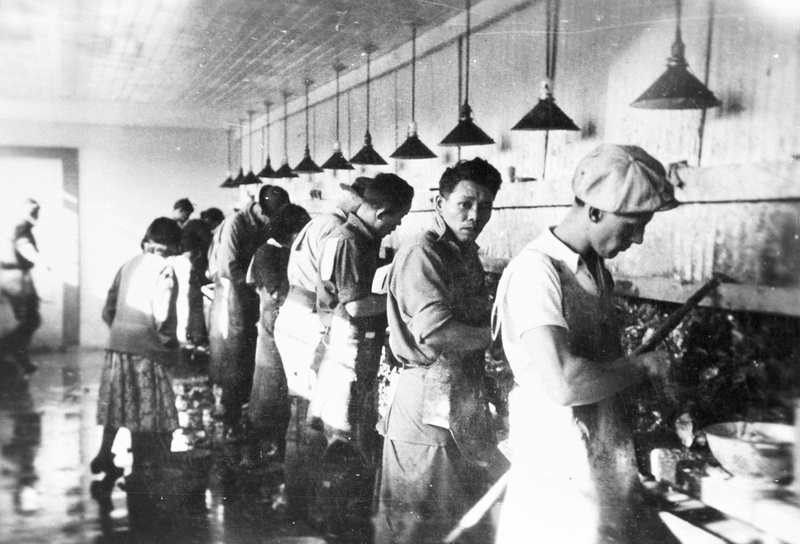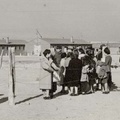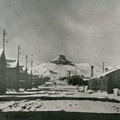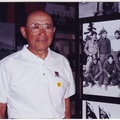Here at Densho, we often draw parallels between the forced removal and subsequent incarceration of Japanese Americans from the West Coast and the treatment of marginalized groups today. Sadly, the need to do this has only increased in recent months. However the current crackdown on and scapegoating of immigrants—particularly those deemed “illegal”—should remind us about an earlier period of Japanese American history: that of the Issei pioneers who came to the U.S. over one hundred years ago and laid the foundation of today’s Japanese American community. But did you know that a good number of those pioneering Issei came came over illegally?
There is a lot of literature on the early history of Japanese immigration and the attempts by the U.S. to restrict and ultimately ban it. But there is relatively little on the efforts of prospective migrants to circumvent such restrictions.
There is one major exception to this, however.
In the 1960s, a Japanese journalist named Kazuo Ito began interviewing Issei both in the Pacific Northwest and Japan about their early lives in America. He used those interviews as the basis for a mammoth book titled simply Issei that was published in Japanese in the 1960s and in English translation in 1973. While professional historians have pointed out many flaws in the book—the lack of documentation, the failure to archive the interviews, the haphazard organization of the book—it is at the same time an invaluable source, since Ito was about the only person doing this kind of work at that time, when many of the early Issei were still alive. By the time other oral history projects came into being a decade or more later, many of these pioneers had passed on, their voices lost forever. So Ito’s work remains widely quoted even today.
He devotes a whole section of the book to the subject of illegal immigration, titled “Secret Passage and Ship-Jumping.” The stories in it are fascinating and eye-opening.
The core issue he describes—then as now—is one of greater demand for migration to the U.S. than the supply of legal passports, particularly as various immigration restrictions took hold in the 1900s as a result of growing anti-Japanese agitation on the West Coast. This demand was fed by the publication of guidebooks extolling the exaggerated virtues of life in the U.S., along with second and third hand stories of successful returnees. Ito describes the resulting infrastructure that sprang up to support the various types of illegal entry, of which there were essentially three: literal ship jumping, border crossing via Canada or Mexico, and passport fraud.
Most of the ship jumpers seemed to consist of people who joined a ship’s crew with the specific intent of jumping ship. (Though one man Ito interviewed reported that he did so to escape bullying by the ship’s crew. Intending to allow himself to be caught and then deported, other Issei convinced him he’d be better off staying. “Thus my unexpected American life began with my jumping ship. I was only a boy of 16 and a half,” he told Ito years later.) Ship jumping soon became something of an epidemic, and shipping companies began to take steps to prevent it, encouraged by steep fines levied by the U.S. government for each escapee. One 1911 ship jumper reported that “[m]en continued jumping ship night after night, and so going ashore was forbidden and the place [the ship] was like a jail.” Another reported being locked in his room by 8 pm every night to prevent any would be ship jumpers. This man nonetheless managed to escape in 1913. Another crew on a boat being delivered to Seattle during World War I was locked away in a hotel that was guarded 24 hours a day. Many of the crewmembers escaped the hotel by making ropes out of sheets and climbing out the windows. In 1915, fifteen crewmembers from the Jintsu Maru jumped ship in Seattle, leaving too few crew members for the ship to continue its voyage! The shipping company had to hire emergency crewmen in Seattle in order to continue the voyage.
At the same time, there were any number of tragic stories: one man remembered two crewmen who jumped from a boat in the Port of Vancouver, Washington who subsequently froze to death. Others met grisly fates when they got tangled up with the ship’s propellers.
By the 1920s, the Nippon Rikkokai, a Christian organization formed to help poor students in Tokyo, had even started a training school for would be ship jumpers in Misaki, Kanagawa prefecture. The trainees would practice swimming the 2½ mile round trip to a nearby island with their clothes and shoes tied up on their head to keep them dry. Though the first “graduate” of the program died in Puget Sound in a ship jumping attempt, Ito estimates some 300 success stories over a seven to eight year period.
Those who successfully made land found a network of helpers among other Japanese immigrants and, sometimes, non-Japanese as well. One man who ran a restaurant in eastern Montana reported that most of his crew were ship jumpers who went by assumed names. (Many ship jumpers headed to rural areas where it was thought they would be harder to find.) A strawberry farmer remembers frequent ship jumpers whom he would help by giving short term jobs and letting them sleep in his stable before sending them further inland. Another man worked as a deliveryman for companies supplying Japanese ships in Seattle. He estimates that he helped some 100 ship jumpers he met in the course of his work in a four year period starting in 1906. One ship jumper recalled running down the street, cold, wet and hungry, and in desperation, knocking on the door of an African American woman he saw reading a Bible. “Since I knew that there were so many cases where, if you trust someone and enter their house, they immediately turn you in to the Immigration Office, I couldn’t feel easy,” he recalled. But the woman and her husband gave him hot coffee and bread, some of their son’s clothing and a place the sleep. The next morning, they introduced him to an Issei friend who helped him get a job at an Alaska fish cannery, starting his new American life.
Crossing the border from Canada or Mexico was another common way for Issei to enter the country. Several men told stories about signing on for contract work in Mexican coal mines, only to find the work harsh and dangerous and subsequently making a run for the border. One describes a two-week journey through Mexico as part of a group, sleeping in fields, taking produce and water wherever they could get it. Though migration from Mexico was legal before 1907, the men had to show $20 in order to get in. Since few had that much money, they managed to pass the same money back and forth among themselves to cross.
An Issei priest on both sides of the border (El Centro and Mexicali) in the 1910s and 1920s describes a scene that sounds like it could have been written yesterday: “At that time I found that there were many Japanese smuggling-in to the State from Mexican territory. I also learned that many couldn’t make it to America, collapsing in the desert country and dying in their tracks. Some could make their way to the states with the assistance of fellow-Japanese, but their ‘sponsors’ continuously threatened them with being reported to the Immigration Office in case of refusal to obey. Those who tried to steal in from Mexico literally risked their lives. Hundreds of Japanese were scattered over that area just waiting for a chance to cross the border.”
Another man tells a perhaps apocryphal story of sneaking into the U.S. from Canada: Would-be migrants would walk backwards across the bridge to the U.S.. When they were inevitably caught, they were made to turn around and go “back”!

Finally, there was passport fraud, of which there were several varieties. Since it was easier to secure passports from some prefectures than others, some would be migrants assumed the identity of someone from another prefecture to secure passports. Ito tells the story of one Seattle area labor contractor who brought in railroad workers using counterfeit passports starting in 1899, estimating that three or four thousand entered the U.S. with such passports. A former Japanese consul in Seattle told the story of how a Japanese Diet member was presumably bribed to broker the issuing of tourist visas to a group of would be migrants. Once the “tour group” landed in Seattle, the migrants scattered.
There were also schemes for those who had entered illegally to be made “legal.” A particularly clever one involved tour groups for Issei men going back to Japan to look for wives. Since the Gentlemen’s Agreement allowed Issei who had already established residency in the U.S. to return, tour organizers would work with Japanese Associations to secure residence papers from the local consulates for those lacking passports. Once in Japan, they could now obtain passports legally. An informant telling this story reports that of the men on the tour groups—which typically included 100 to 150 men—more than half typically didn’t have valid passports.
Not surprisingly, various “advisors” soon emerged to help would-be migrants sort through their various options. Inevitably, some of these were frauds, adding yet another peril to the many others Issei migrants had to negotiate.
Over the years, I’ve interviewed many Nisei, and quite a few told stories of Issei parents who entered illegally that were often vague in detail. These stories were often told proudly and framed to emphasize the bravery or ingenuity of their parents in seeking a better life for themselves and their families. Densho’s visual history archive contains a number of these stories as well. (See, for instance, interviews with May Ota Higa and Shigeko Sese Uno; there are others.)
Ito himself takes similar pride in these migrants. “I am not exonerating smugglers-in,” he wrote, “but I report the facts of its existence because I want to show the stout spiritual power of those Issei who desired to go to a foreign country even at the risk of their lives and reputations, in order to study and work.” He goes to on to write, “Deep in their minds, both those who held a formal passport and those who did not, shared the same serious resolution and vigorous vitality.”
I leave it to the reader to draw meaning from these accounts. For me, though, it is hard to look at the contemporary travails of immigrants and refugees coming to the U.S. to improve their own and their families’ life chances—in whatever means they deem necessary—and not think of our pioneering Issei.
*This article was originally published on the Densho Blog on December 15, 2017.
© 2017 Densho










